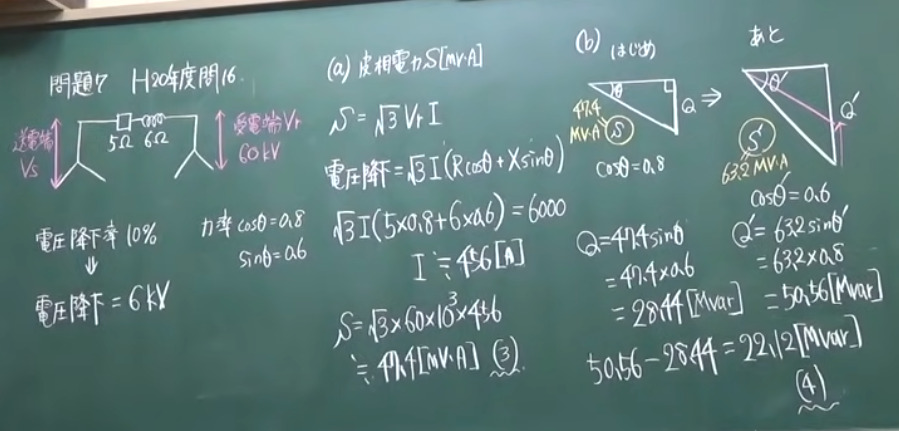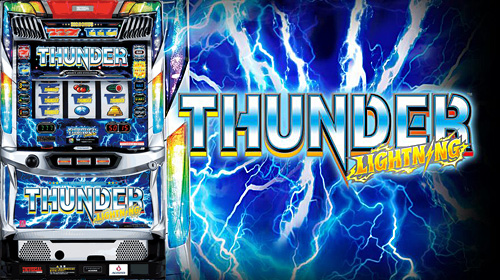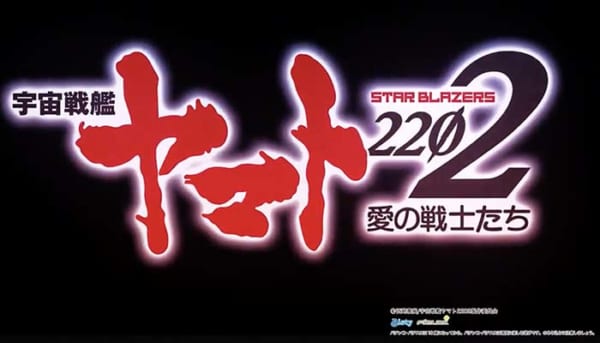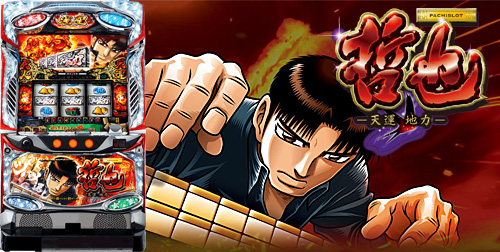[GPT3による要約]
その中で、著者は持続可能なWeb3ゲーム経済の概念について論じています。ゲーム経済が持続可能であるためには、外的要因に左右されずに自活できることが必要だと主張しています。著者は、持続可能な経済を持つゲームの例として、DecentralandとCryptokittiesの2つを挙げています。これらのゲームでは、ゲーム内アイテムが他のゲーム内アイテムや現実の通貨と交換できるため、経済が自活していると主張しています。著者は最後に、持続可能なゲーム経済は可能であるが、それには慎重な計画と設計が必要であると述べています。
長寿命ゲームを目指すべき&資産の経済的妥当性を監視すべき
持続可能なゲーム経済というのは間違った目標だ。
長寿命なゲームこそ、私たちに必要なリフレームである。
我々は、Web3のゲーム経済を設計するための新しいヒューリスティック、すなわちゲーム資産の経済的関連性を紹介します。
呪われた問題
呪われた問題とは、ゴールの矛盾を内在した問題である(Alex Jaffe, Riot Games, GDC)。
我々は、いくつかの仮定とプレイヤーの約束を緩和することで、呪われた問題を解決することができる。(参照:Level 7 - We Expect Too Much From Blockchain Games)
数え切れないほどのNFTゲームが、「経済のバランスを取る」ために、サイクルを通じてNFTの「資産」価値を維持しようと努力するでしょう。彼らは非難され、捨てられ、嘲笑されるでしょう - なぜか?なぜなら、ゲームリソースは「資産」とみなされ、資産価格が急落すると、買い手は不幸になるからです!
現在のWeb3ゲームユーザーの多くは、賃金と投資収益率への期待をゲームプレイに固定しています。(プレイ・トゥ・アーニング)。
見事なゲームであることによって成功するゲームもありますが、不幸になるプレイヤーもいて、それを「ラグ」と認識します。成功したシステムは、意図したステークホルダーを定期的に不幸にすることはない。(注:ポーカーゲームを「ラグ」と呼ぶ人はいない)。
経済的妥当性という概念は、このような濁流を乗り切るのに役立つだろう。
経済的関連性
ゲーム資産の経済的関連性の時間軸(つまり、この資産がある経済においてどれだけの期間、関連性と価値を持つか)は、優れたヒューリスティックとして心に留めておくとよいでしょう。
経済的関連性は希少であるため、様々なゲームアセットが競い合っています。新しいアセットを導入すると、他のアセットの関連性は時間の経過とともに自然に失われていきます。
例 銅鉱石は、World of Warcraftにおいて、レベル1~75の採掘を行うプレイヤーにとっては経済的な関連性がありますが、プレイヤーの目標(アリーナでの勝利、レイドの撃破など)にはすぐに無関係になります。しかし、アリーナでの勝利やレイドでの敗北など、プレイヤーの目標を達成するためには、すぐに無関係になってしまいます。さらに、銅鉱石市場の継続的な成功に固定された期待はありません。
ブロックチェーンゲームの呪われた問題の核心は、ゲーム資産の大部分に経済的関連性を与えようとしていることです!新規ユーザーの成長、既存ユーザーの資産価値の保持、そして皆を楽しませることのバランスを取りながらね。
資産価格が上がる!資産を稼ぐ!」という体験は、資本支出を惜しまない人にしかできないものになってしまっているのですが、それはこの永続的な経済的関連性を与えたいという欲求に執着しているからです。(これは、私たちがフリー・トゥ・プレイから得た素晴らしい教訓、つまり無料ゲームはロックだ!をすべて否定するものです。無料ゲームは素晴らしい!プレイは無料だ!何十億もの人々がこれらのゲームをプレイしている 何十億人もの人々がこれらのゲームをプレイしているのです!)。
さらに、多くのWeb3ゲームは、既存のNFTプロジェクト、特に1000~1万NFTを販売した後に、経済性を継承しています。
また、NFTプロジェクトがWeb3ゲームになり、関連資産を無限に経済化するという目標を追いかけているものもあります。
スケモルフィズムからの解放
10K NFTプロフィール画像(PFP)プロジェクトからのスキューモーフィズムは、早期に収益を計上し、開発のリスクを軽減できると信じ込ませています。しかし、その収益のうち、消費支出と投資支出はどの程度なのでしょうか?
しかし、10年、100年と続くような本当に長寿のゲームを望むのであれば、コミュニティにインセンティブを与える方法を考える必要があります。ヒント:長期的に人々の興味を引き続けるのは、数ヶ月/1年のステーキングゲームではないのです。
この問題を、ゲームの経済性ではなく、ゲームの寿命という観点から捉え直すことで、恒久的に経済的に価値のある資産でゲーム経済を作るという制約から解放されます。
また、私たちが販売するすべてのNFTとトークンは、プレイヤーに対する義務であり、ゲーム内のどこに埋め込むかについて本当に注意しなければならないことを思い起こさせてくれます。
Crypto Raiders MOBのデザインは、その好例です。Crypto RaidersのMOBのデザインはその好例です。しかし、すべてのNFTが資産と見なせるわけではありませんし、見なすべきでもありません。NFTについても、より詳細なボキャブラリーが必要です。
ブロックチェーンゲームの可能性を思い出してください。コミュニティが長期にわたって滞在し、貢献し(価値創造-獲得)、ゲームコンテンツやトランスメディアを消費し、こうした仮想空間で長期的な友情を築くことができる、新しい体験に資金を提供することができるようになりました。
Games of Progression, Games of Skill
The narrative of true digital ownership in web3 Games naturally lend themselves to games of progression, over games of skill. (I own my assets!)
In the past few months of experimentation, we have clung to the narrative of the ability for players to take out their ‘value’ from the game.
But ‘true digital ownership’ is just one of the many angles that we can take towards these web3 games.
This, combined with the skeumorphism inherited from 10K PFP projects led to people raising via selling a limited amount of NFTs too, which again, is an obligation.
However, meaning in games comes from the effort we put in! the ability to buy our way into significant progression over others, is at odds with what makes most games fun.
You shouldn’t purely be able to buy your way to a legendary; that often defeats the purpose of the game — gamers call this ‘pay-to-win’.
In future levels, we’ll discuss pay-to-win and how crypto and play-and-earn can actually help reduce the negative feelings associated with pay-to-win.
Instead, we should be turning our view towards games as engines of experience, and looking at web3 as a new set of toolsets.
Games as Engines of Experience
When the talented game designers (experience designers) come into web3, we’ll know. — Gabe Leydon, Designing Digital Economies, Colossus
There are plenty of new mechanics that we can unlock now, based on the new tools that we have: soulbounds, NFTs, ERC20s, AMMs, money markets...
I keep repeating this — we can use NFTs, crypto to engineer new experiences. Blockchain has a place in games: one, to change the business of games, and two, to create brand new types of gameplay experiences, with new types of mechanics.
We will detail two mechanics here before moving on to discussing some tactics on building games and ‘meta-economies’ that can survive in the long run.
Examples of New Mechanics
Uplifting
Instead of every asset being on-chain (creating asset bloat, and diluting relevance), lean into most assets being off-chain, and require a choice to be made before putting them on-chain. This mechanic I call “uplifting”. (AL calls this ‘elevation’).
The economy of Gods Unchained pre-GODS token had a resource called Flux. Flux was earned upon victory, and was untradable. It was used to fuse two cards to make one tradable NFT card. Now we can have tradable cards without massive market-bloat.
We can generate unique aspirational goals for players (to own NFTs through gameplay — visible, recognizable, and tradable).
Rewarding Player Knowledge & Skill
Playing the ‘market game’.
GameFi: because I have an edge in my knowledge of the metagame, and ability to play the game, I am able to get rewarded for my play.
At the far end of GameFi, we have ‘traditional’ eSports, but in its best light, GameFi allows for ‘eSports for everyone’'.
In Level 6, we discussed an example of a game concept like Star Atlas rewarding this skillset and ‘GameFi’ reinforcing the objectives of the game designer — putting the player in these intense situations.
Designing Long-Lived Games: Tactics
First: stop anchoring value, and ROI to in-game assets! Let players earn them. Let players put a value on these digital assets. Let those digital assets be uplifted by players themselves.
Try your best to not anchor players to a number or price (‘mint price’).
Attach direct utility to your NFTs if you must have them (whether internal or external to the game economy,). Consider whether your NFTs should be tied with the game, or external to the game.
Finally, be very careful of which assets have economic relevance and which don’t. Typically, your ecosystem token, or land NFTs, are great candidates for ‘long-term economic relevance’.
Most importantly — don’t be afraid to have assets that can lose economic relevance.
This allows for a constant renewal — prevents stagnation (and unfriendliness towards new players / entrants (which are the lifeblood of the economy in all games)), and also prevents ‘baron’ and snowballing behavior which kills game economies, and eventually, games.
Tokens that decay (berries that can rot…).
NFTs that can die and get burnt.
Seasonal Economies
Seasonal economies with resets — with seasonal economies, the economic relevance of game assets is expected to fade over time. The expectation of loss is baked in, and there is a cadence by which the value of new resources are renewed.
In Diablo II, after every ladder season, every ladder character gets converted to a non-ladder character, and the new season starts with brand new characters. In Escape from Tarkov, there is the wipe, which achieves something functionally similar.
In this way, cycles are expected and even telegraphed, and there is no strong expectation on permanent economic relevance of the asset.
You can always relive the ‘early days’ again. (You’re… still early.)
Take close to heart this concept of Economic Relevance.
If you fail to take this into consideration when designing your economy, you will disappoint players, and investors. The project will die a slow death, and soon, even the community won’t be around.
Manage Expectations
Everything is about managing expectations. Economic relevance is a concept that will help you with this.
The expectation should be: this is a game world I can get lost in for years.
The expectation should not be: this is a sustainable game economy where I can farm resources, and get a good return given my current assets, for years.
‘Sustainable Game Economies’ are dead, long live the Long-Lived Game.
h/t to Anthony Cheng for discussion on Cursed Problems, Devin Becker for reading drafts.
Thanks for reading Metaversus! Subscribe for free to receive new posts and support my work.
上達のゲーム、技巧のゲーム
Web3ゲームにおける真のデジタルオーナーシップの物語は、スキルゲームよりもプログレッションゲームに適しています。(私は自分の資産を所有している!)。
過去数ヶ月の実験では、私たちはプレイヤーがゲームから「価値」を持ち出すことができるという物語に固執してきました。
しかし、「真のデジタル所有権」は、こうしたWeb3ゲームに向けられる多くの角度のひとつに過ぎないのです。
これは、10K PFPプロジェクトから受け継いだスキモーフィズムと相まって、人々は限られた量のNFTを販売することで資金を調達するようになり、これもまた義務となっています。
しかし、ゲームにおける意味は、私たちの努力によってもたらされます!他の人よりも大きな進歩をもたらす方法を買うことができることは、ほとんどのゲームを楽しくすることと相反するものなのです。
純粋に伝説への道を買うことができるべきではありません。それはしばしばゲームの目的を破り、ゲーマーはこれを「ペイ トゥー ウィン」と呼びます。
今後のレベルでは、ペイ トゥー ウィンについて、また暗号とプレイ&アー ンがペイ トゥー ウィンに伴うネガティブな感情を軽減する のに実際にどのように役立つかについて説明しま す。
その代わりに、私たちは経験のエンジンとしてのゲームに視点を移し、新しいツールセットとしてのWeb3を見るべきです。
エクスペリエンスエンジンとしてのゲーム
才能あるゲームデザイナー(エクスペリエンスデザイナー)がWeb3に参入してくれば、わかるだろう。- ゲイブ・レイドン(デジタルエコノミーのデザイン、コロッサス社
ソウルバウンズ、NFT、ERC20、AMM、マネーマーケット...私たちが持っている新しいツールに基づき、今解除できる新しい仕組みがたくさんあります。
何度も言いますが、NFTや暗号を使えば、新しい体験を生み出すことができるのです。1つは、ゲームのビジネスを変えること、もう1つは、新しいタイプのメカニクスを備えた、まったく新しいタイプのゲームプレイ体験を生み出すことです。
ここでは、2つのメカニズムについて詳しく説明した後、長期的に生き残ることができるゲームと「メタ経済」の構築に関するいくつかの戦術について議論していきます。
新メカニズムの例
アップリフティング
すべての資産をオンチェーンにする(資産の肥大化と関連性の希薄化)代わりに、ほとんどの資産をオフチェーンにし、オンチェーンにする前に選択することを義務付ける。この仕組みを私は「高揚」と呼んでいます。(ALはこれを「高揚」と呼んでいます)。
Gods Unchained』以前のGODSトークンの経済には、Fluxというリソースがありました。Fluxは勝利時に得られるもので、交換不可能なものだった。これは、2枚のカードを融合して1枚の取引可能なNFTカードを作るために使われました。今、私たちは、大規模な市場の膨張なしに、取引可能なカードを持つことができます。
ゲームプレイを通じてNFTを所有する(目に見え、認識でき、取引できる)という、プレイヤーにとってユニークな願望的目標を生み出すことができます。
プレイヤーの知識とスキルに報酬を与える
マーケットゲーム」をすること。
GameFi:メタゲームに関する知識とゲームプレイの能力で優位に立っているため、プレイに対して報酬を得ることができる。
GameFiの最奥には「伝統的な」eSportsがありますが、GameFiは「みんなのeSports」を可能にしています。
レベル6では、『スターアトラス』のようなゲームコンセプトがこのスキルセットに報酬を与え、『GameFi』がゲームデザイナーの目的を強化する例、つまりプレイヤーをこのような激しい状況に置く例について説明しました。
ロングライフゲームのデザイン 戦術
第一に、ゲーム内の資産に価値やROIを固定するのはやめましょう。プレイヤーに獲得させるのです。プレイヤーにデジタルアセットに価値を持たせてください。デジタルアセットは、プレイヤー自身の手で育ててください。
プレイヤーに数字や価格(「ミントプライス」)を固定させないよう、最善を尽くしましょう。
NFTが必要な場合は、直接的な実用性を持たせてください(ゲーム経済の内部か外部かに関わらず、です)。NFTをゲームと連動させるか、ゲームの外部と連動させるかを検討する。
最後に、どの資産が経済的な関連性を持ち、どれがそうでないかを十分に注意してください。一般的に、エコシステムトークンや土地のNFTは「長期的な経済的関連性」を持つ素晴らしい候補です。
最も重要なことは、経済的関連性を失う可能性のある資産を持つことを恐れてはいけないということです。
これにより、常に更新することができ、停滞(および新規プレイヤー/参入者(すべてのゲームで経済の活力源である)に対する不親切)を防ぎ、またゲーム経済、ひいてはゲームを殺す「男爵」と雪だるま式行動を防止することができます。
腐るトークン(腐るベリー...)。
NFTが死んで焼かれることがある。
季節限定エコノミー
リセットを伴う季節性経済 - 季節性経済では、ゲーム資産の経済的関連性が時間とともに薄れていくことが予想されます。失われることを想定し、新しいリソースの価値が更新されるような周期があります。
Diablo IIでは、ラダーシーズンが終わるたびに、ラダーキャラクターはすべて非ラダーキャラクターに変換され、新しいシーズンはまったく新しいキャラクターで始まります。タルコフからの脱出』には「ワイプ」があり、機能的に似たようなことを実現しています。
このように、サイクルは予想され、電報さえ打たれており、資産の永続的な経済的関連性には強い期待はありません。
あなたはいつでも「初期の頃」を再び体験することができます。(君は...まだ早いよ)。
このEconomic Relevanceの概念をしっかりと心に刻んでおいてください。
もし、このことを考慮せずに経済設計をすれば、プレイヤーや投資家を失望させることになります。プロジェクトはゆっくりとした死を迎え、やがてコミュニティさえも存在しなくなるでしょう。
期待値を管理する
何事も期待を管理することが大切です。経済的妥当性は、これを助けてくれる概念です。
期待すべきは、「これは何年でも没頭できるゲームの世界だ」ということです。
期待すべきは、「何年でも没頭できるゲーム世界であること」ではなく、「何年でも資源を耕し、現在の資産から良いリターンを得られる、持続可能なゲーム経済であること」なのです。
持続可能なゲーム経済」は死に、「長寿ゲーム」は長生きするのです。
h/t to Anthony Cheng for discussion on Cursed Problems, Devin Becker for reading drafts.
Metaversusをお読みいただきありがとうございました。新しい投稿を受け取り、私の仕事をサポートするために、無料で購読してください。
おすすめ記事
- 【英語学習 暗号通貨、NFT、Web3.0】レベル1:Metaversusの紹介
- 【英語学習 暗号通貨、NFT、Web3.0】レベル2:ゲームのマネタイズ、Play-and-Earnの約束とインセンティブの調和
- 【英語学習 暗号通貨、NFT、Web3.0】レベル3:Diablo II」、ゲームエコノミーデザインの教訓、命名法の重要性
- 【英語学習 暗号通貨、NFT、Web3.0】レベル4:資金調達、自由、フリーガイ。クリエイターエコノミー
- 【英語学習 暗号通貨、NFT、Web3.0】レベル5:アクシーズ スムースラブポーションマシン、&プレイ&アーンの社会契約書
- 【英語学習 暗号通貨、NFT、Web3.0】レベル6:コンフリクトとフリクションがゲームプレイを促進する方法。学習、デジタル希少価値、物語性
- 【英語学習 暗号通貨、NFT、Web3.0】レベル7:ブロックチェーンゲームに期待しすぎている





